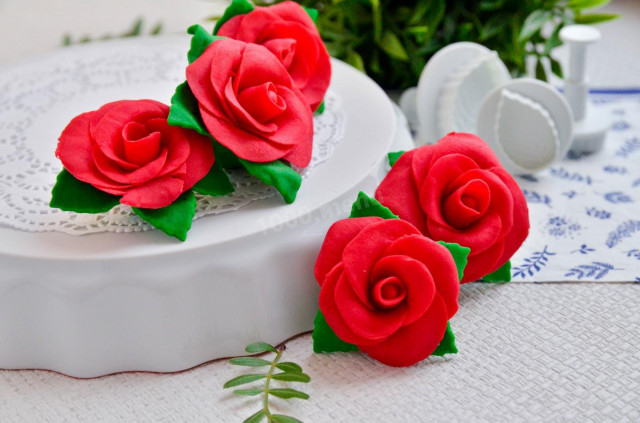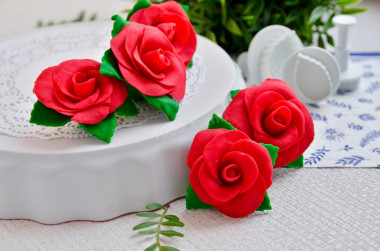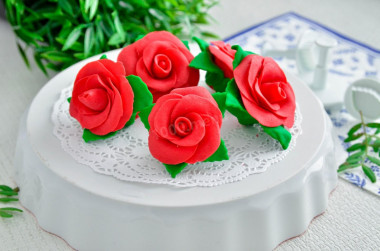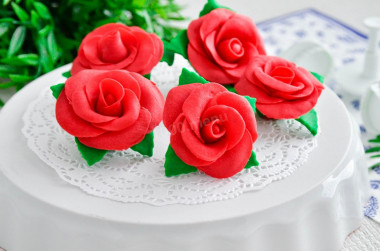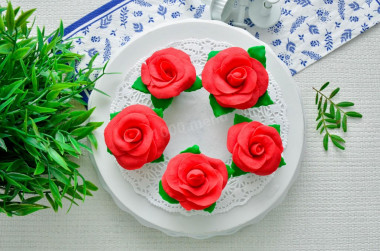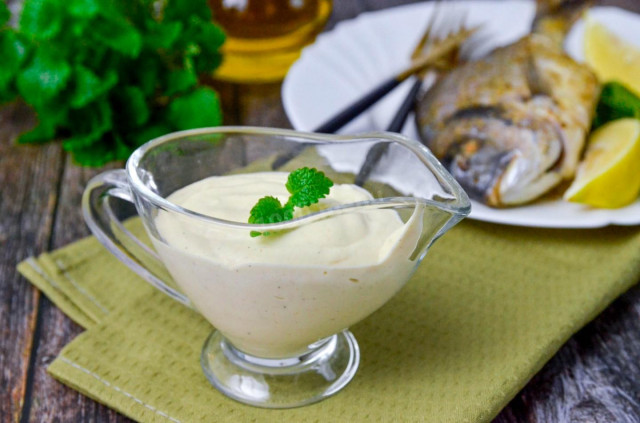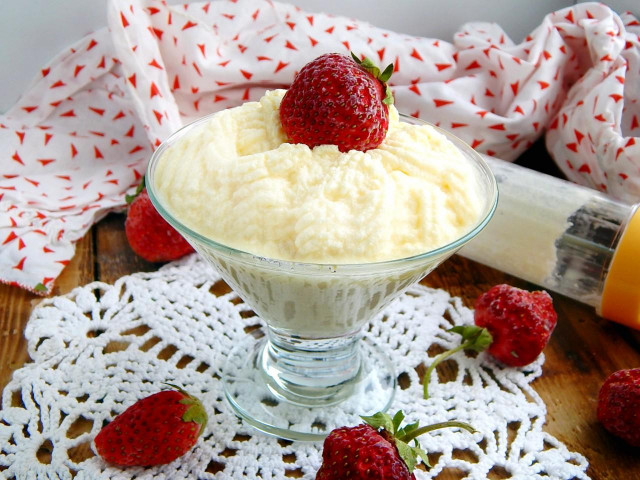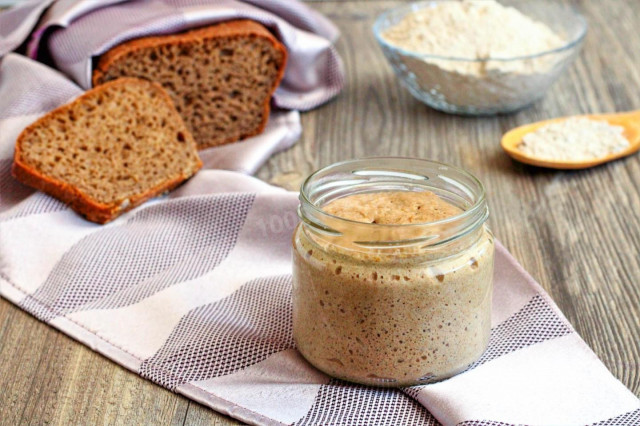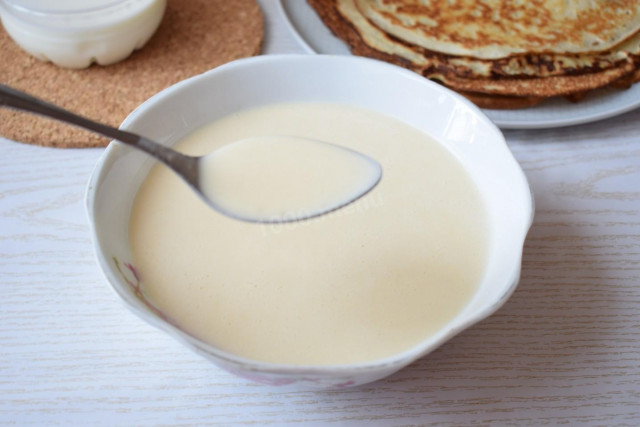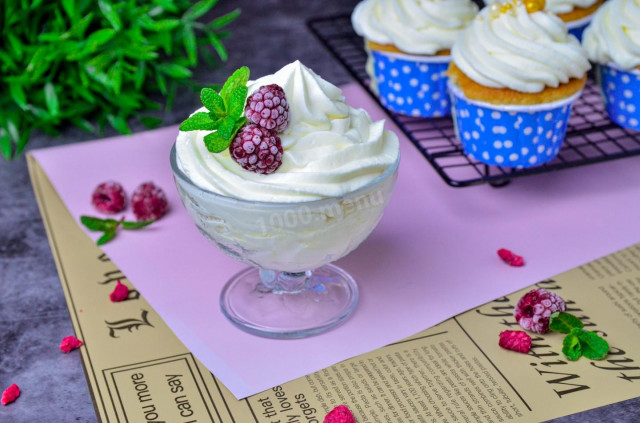Composition / ingredients
Step-by-step cooking
Step 1:
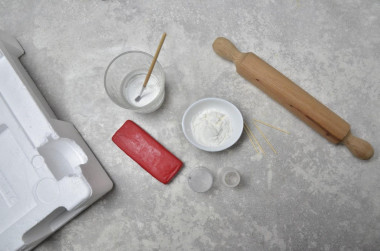
How to make roses from mastic? Prepare the necessary materials and tools. Mastic is used ready-made, but it is also suitable for self-made. It is better to take corn starch, it will not shine on the finished product.
Step 2:
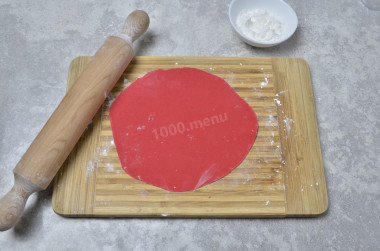
Tear off a piece of mastic, mash it well. If the mastic is sticky, then sprinkle your hands with starch. My mastic didn't stick at all, I didn't need it. Also sprinkle the board with starch. With a rolling pin, roll out the mastic into a thin layer, about 2 mm thick. Do not roll out too thinly, the mastic may break during modeling.
Step 3:
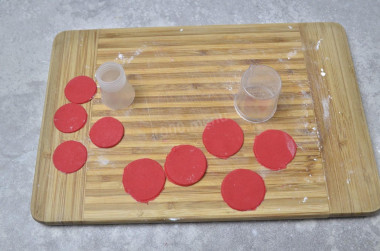
Take suitable round cuttings. It can be anything, for example, I took a nozzle for a cooking bag and a package of toothpicks. The main thing is that they are of different sizes — one is slightly smaller than the other. I have a size of 3 and 3.5 cm. Depending on the size of the cuttings, you will have large or small roses. Use them to cut out 4 small circles and 5 large ones.
Step 4:
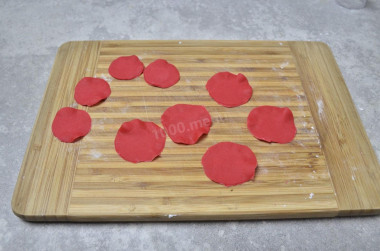
Start forming petals. To do this, squeeze the very edge of each circle with your fingers, as if thinning it and giving it undulation. Make movements with your fingers as if you are making dumplings. Make the edge thin only on 2/3 of the perimeter of the circle, leave 1/3 untouched. Do this with all the circles, both large and small. Leave the blanks to lie down for 10 minutes, so that the mastic grabs a little.
Step 5:
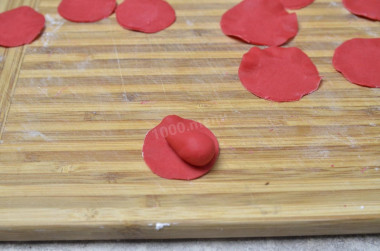
From the scraps of mastic, make a central bud. To do this, roll a small ball, and then make a cone-like bud out of it. It should be 2/3 of the height of the small circle.
Step 6:
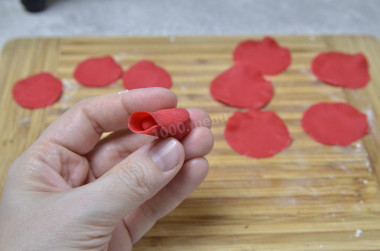
Next, take one small circle and, with a brush dipped in water, lubricate the part of it that was left thick from below. Wrap the circle around the bud blank so that its ends overlap at the top. The moistened part of the petal should stick well to the bud. But do not overdo it with water — lubricate with a very small amount.
Step 7:
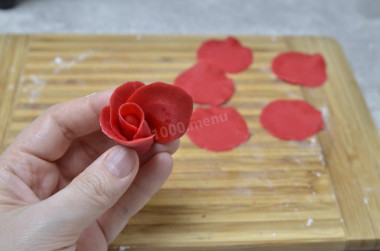
Then, in the same way, lubricate the remaining small circles with water. Take the first one and attach it to the bud with the thick greased side down. Press the petal only on one side, the left. Take the second petal and insert it between the bud and the first petal so that the second starts from the middle of the first. Similarly, press it only on the left. Also stick the third petal, it will already need to be stuck completely.
Step 8:
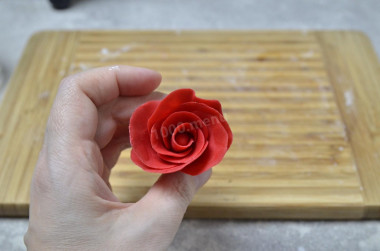
Now take large circles and, also wetting them with water along the thick edge, wrap them around the flower. do it similarly to small ones — insert the next petal between the bud and the previous one, starting from the middle of the petal. Stick the last petal completely. Here is such a blank you will get. You can also use more circles to get a lush rose.
Step 9:
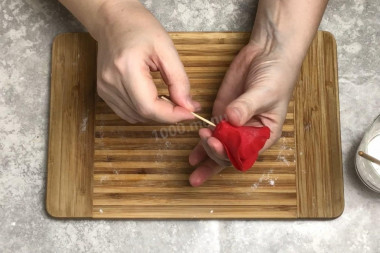
Stick a toothpick into the rosette from below, but be careful that it does not come out.
Step 10:
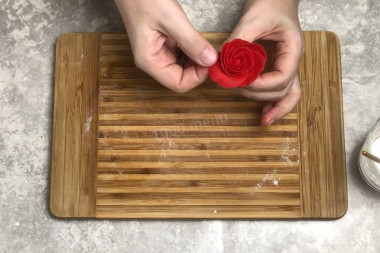
Twist the petals from above with your fingers, giving them a beautiful curve.
Step 11:
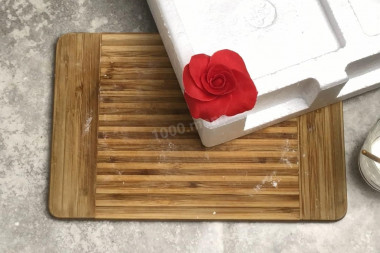
Stick a toothpick with a rose in the foam and leave it to completely solidify. While the mastic is not dried at all, you can change the shape of the petals as you like. But then be careful — the mastic will become brittle.
Step 12:
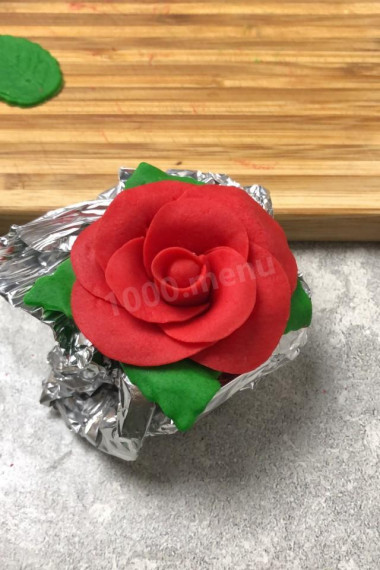
I also additionally made leaves from green mastic and glued them to the bottom of the flower. To prevent them from falling off during drying, I crumpled the foil, making a small depression in the middle and laid the roses on it. So the leaves did not fall and remained on top. You can put the finished roses in a container and store them in a dry place.
Caloric content of the products possible in the composition of the dish
- Corn starch - 329 kcal/100g
- Mastic - 393 kcal/100g

